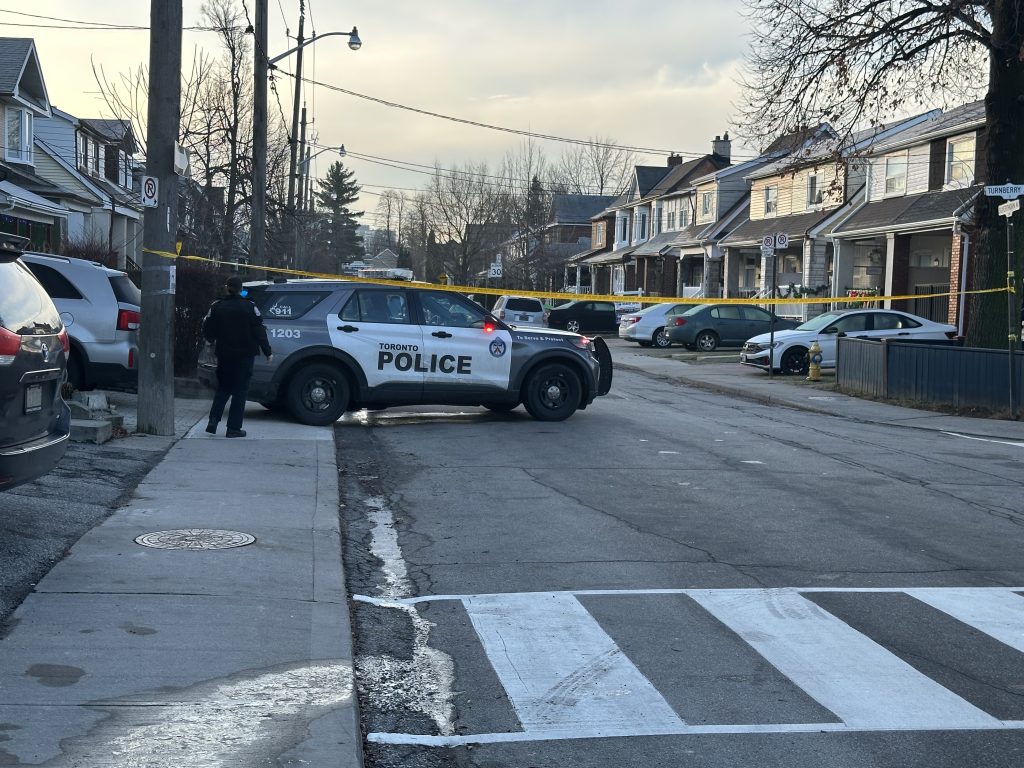New United Way initiative aims to provide affordable spaces for community service agencies in the GTA
Posted November 6, 2024 8:20 pm.
Last Updated November 7, 2024 12:28 pm.
The soaring rent prices in Toronto are no doubt affecting residential and commercial tenants, but an oft-overlooked section of renters that are also feeling the crunch are community service agencies like food banks, those providing settlement or employment services, and youth and seniors programs.
According to a new report by United Way titled Essential Spaces: Real (estate) solutions for community needs, 70 per cent of community service nonprofits lease their operating space and over the last 10 years, their rent has increased by 57 per cent. As such, they’re effectively being priced out of the neighbourhoods they serve and the communities that need them.
“The same [market] forces that are driving people to food banks are driving many food banks and many other nonprofits to either curtail or close their services altogether,” says Ryan Noble, executive director of the North York Harvest Food Bank, which finds itself in the same predicament.
After nearly 10 years at their current location, Noble says they need to move within the next year or sooner. They’ve not only outgrown the space due to rising food bank usage across the country, but the building is in dire need of repairs and updates after numerous floods, a broken freezer and other ongoing maintenance issues.
However, finding something large enough and affordable within their service area is proving to be a massive challenge.
“For almost the last 20 years, we’ve been fortunate to have different partnerships set up where we’ve had far below market rent. What we’re faced with now is moving to a market condition, which is about a 10 times increase in the amount of expense that we’re going to have to spend on leasing and operations,” he says.
Currently, their location serves as a food distribution warehouse as well as a site to run programs that are meant to alleviate food insecurity in the long term.
“What we do is operate programs that are wraparound services to that food distribution. So what that means is when people come to our food spaces, they have access to healthcare resources, legal services or settlement services, all the types of things that people truly need to have in their life so that they have a sustainable livelihood and ultimately don’t need to come to the food bank in the first place,” he says.
“Right here in our warehouse, we operate job training programs so that people can come in, learn the elements of warehousing, logistics and operations management, and then get placement in the private sector in full-time jobs with stable hours, benefits and living wages. Those are the types of interventions that people need to have a truly long-term solution to food insecurity.”
Noble fears they will have to severely reduce the kinds of support they offer if a majority of their budget goes toward rent.
“Ultimately we have a fixed budget. We are not a government agency. We don’t receive any government support. So we rely on the generosity of the community to do the work that we do. As our costs go up and we spend more and more dollars on occupancy, on leases and rent and operations, that means fewer dollars, fewer amount of our resources that can go into things like purchasing food or operating programs in our community,” he says.
United Way’s Community Real Estate initiative
Ruth Crammond, VP of Community Infrastructure at United Way Greater Toronto says organizations like the North York Harvest Food Bank are part of an invisible network of services “that are so vital to creating the kind of neighborhoods we want to live in.”
“These services may be invisible to people who aren’t using them, but to the people who are using them, they are those ‘go-to’ services every day. Whether it be the food program that people need, whether it be the afterschool program that a family is depending on, a tutoring program, a seniors program where seniors are coming every day to meet their friends and find community. And if people have to travel too far for those services, then they’re not going to be accessible in the way that we know they need to be,” she says.
In an effort to keep these services from being displaced and ensure they remain accessible to their communities, United Way has launched an ambitious community real estate initiative.
“These community service organizations are assets and they need the space and the real estate assets to be able to continue to operate,” says Crammond.
“[We aim to] raise a hundred million dollars over the next 10 years to invest in 10 community hubs and also in programs and service organizations so they can own their community real estate or secure long-term leases.”
The hubs will house a number of programs including legal services, primary healthcare, dental services, settlement services, youth mental health programs and activities for kids, among others, depending on the needs of the specific community they are in.
“They’re that wraparound model we think is incredibly valuable for communities. We’re also going to be offering grants and loans to organizations that might be trying to consider a different kind of space or how they’re going to manage their relocation,” she says.
The first of 10 hubs is being built in Parkdale in partnership with the City of Toronto.
“That is a community that is changing. We’re worried that the people who have lived there for so many years and call Parkdale home are struggling. As the neighbourhood changes, the services that they depend on are also at risk,” says Crammond
“So we’re working with the City of Toronto on that hub. The city is building an amazing project with 260 units of affordable housing and refurbishing the library and the recreation center and United Way is going to come in and work with some of the community service organizations to create the community service space that’s attached to the whole project.”
Funding for the initiative will come from corporate partners, major individual donors and United Way’s annual fundraising campaign.
While it may not be an immediate solution to North York Harvest Food Bank’s current dilemma, Noble is optimistic for the long term.
“These are the types of partnerships that would really energize organizations like North York Harvest Food Bank and allow us to do the work that we need to do in the community and allow larger institutions who have access to this type of real estate to be more effective and more efficient in the way that real estate is used,” he says.
“I think that this has the potential to be a real game-changing situation for an organization like the United Way, certainly for an organization like North York Harvest Food Bank, but more importantly for the communities that all of us live in and the communities that we as organizations serve.”








